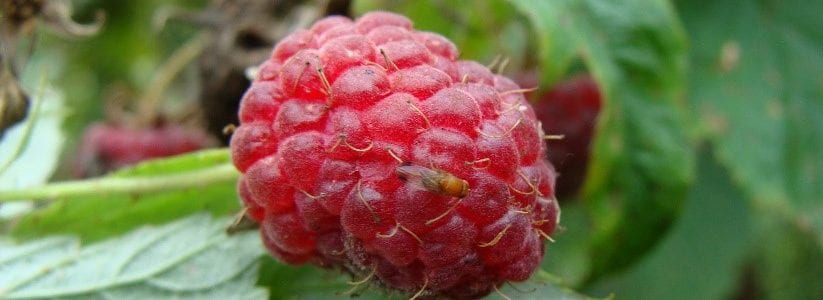A single female SWD was caught in a raspberry planting in Ulster County on June 10, 2021. There are two Scentry jar traps and two Trece sticky card traps in the planting. The female was caught in a jar trap. Traps at this location are being monitored by Jim O'Connell, Cornell Cooperative Extension of Ulster County.
The female's egg-laying structure is the problem. It is like a tiny saw blade and allows her to cut through the skin of perfect, ripening and ripe fruit to lay her egg underneath the skin. Inside the fruit, the larva hatches out of the egg and is in a perfect, protected place to develop. After three instars, the larva exits the fruit and pupates. Adult flies emerge from the pupae to mate and lay more eggs.

You can see from the above life cycle, that it only takes as few as 10 days, under optimum conditions, for SWD to grow up from egg to adult. Yikes! No wonder the population explodes in late summer.
Establishing a new balance; disrupting ecosystems
Let's hope that, as the years roll along, our native parasites, parasitoids, pathogens, and predators will learn how to "use" this abundant SWD resource and the population explosions will be moderated, making it easier to protect our fruit.
Did you know that, in the wild, SWD decimates the wild brambles that birds rely on for food during their post-breeding and fall migratory periods? Research on SWD's impact on bird communities is underway in the Allegheny National Forest in PA, led by Dr. Christopher Lituma, West Virginia University, Morgantown, WV.
Here's hoping a new balance is established to rein in SWD.

